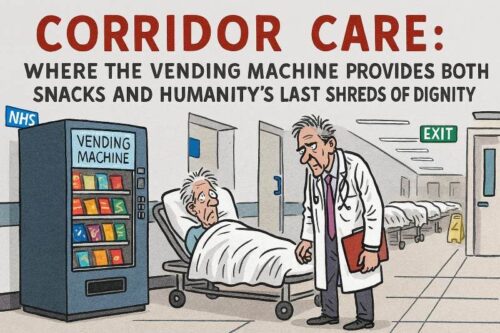Estimated reading time at 200 wpm: 4 minutes
Headlines often proclaim that rising business rates are “killing the high street,” forcing businesses to close their doors. This narrative frames the tax as a singular, destructive force responsible for the decline of retail and the loss of jobs. While business rates are a significant financial pressure, a deeper economic analysis reveals a more complex reality. The story is not just one of businesses failing, but of them strategically adapting and, in the process, shifting the tax burden onto an unsuspecting group: the customer.
The Nature of the Business Tax
Business rates, or non-domestic rates, are a fixed tax on commercial properties in the UK. They are an annual charge based on a property’s estimated rental value. The revenue collected contributes to local services. For large supermarket chains with hundreds of stores, this tax can amount to millions of pounds annually. Faced with such a substantial overhead cost, a company has a choice: absorb the cost, leading to reduced profitability, or find a way to offset it.
Whether or not you agree our Fat Disclaimer applies
The initial concern about closures
Initially, it appears that the most vulnerable stores—those with already thin profit margins—will be forced to close. Analysis by industry experts has shown that a proposed rise in business rates could tip dozens of large supermarket locations into unprofitability. For these individual stores, the tax can indeed serve as the “tipping point” that makes them financially unviable.
The strategic response from large chains
However, for a large, multi-store corporation, a different strategy is available. The company can leverage its entire network to absorb and redistribute the cost. The most common and effective method is to pass the cost on to the customer. This is not done with large, sudden price hikes but through a more subtle and deliberate approach.
The Hidden Cost on the Consumer
Through careful analysis, it becomes clear that business rates can act as a kind of stealth tax on the consumer. The process works through a strategy known as cross-subsidisation and is influenced by the concept of price elasticity.
How pricing strategies are used to cover the costs
A large supermarket chain can strategically increase prices on products where a relatively small rise goes unnoticed. The demand for items like electronics, home appliances, or other expensive goods is less sensitive to price changes. A one-pound increase on a £200 television is unlikely to deter a customer, but when applied across a national chain, it can generate significant revenue. This revenue from high-value, high-margin items can then be used to subsidise the fixed costs of the business.
The inevitable outcome for shoppers
In the end, this strategic adaptation means that while the headlines focus on businesses “paying” the tax, it is the shopper who ultimately funds it. The business rates burden is not absorbed by the supermarket’s profits; it is baked into the price of goods. The tax is effectively passed down the supply chain, turning a tax on business property into a hidden, regressive tax on the consumer, who pays a little extra on every purchase without ever seeing a line item for “business rates” on their receipt.
How other sectors also may pass on costs
This dynamic is not unique to the grocery sector. Other retailers, such as high-street clothing shops, DIY stores, and automotive parts suppliers, also face the same pressure from business rates. These sectors, too, can adjust pricing on their products to cover the fixed tax. For high-value purchases like tools, car parts, or furniture, small price adjustments are often not noticeable to the customer, allowing companies to pass on their business (property) tax without significantly impacting sales volume and profits.
Conclusion
This analysis reveals that media narratives around business rates often oversimplifies a complex issue. While the tax can contribute to the decline of struggling businesses, it also drives large corporations to adopt sophisticated strategies that pass the financial burden on to customers. This means that, in many cases, what is presented as a tax on businesses is in practice an unseen tax on the consumer, highlighting the disconnect between the public discourse and the economic reality.



